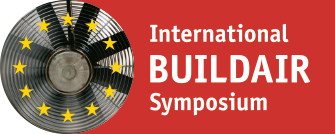Purpose of the work
Airtightness/air permeability are inseparable from leakages and their detection, categorization, or evaluation. The diverse contexts due to the main construction methods, structures, materials used, individual conditions on site for each building, and the perspectives of the different disciplines regarding airtightness, make it hard to take quick decisions on existing leakages. The research project presented here wants to provide recommendations for action to all builders and professionals in the building industry for handling and evaluating air leakages.
Content of the contribution
The presentation will analyze problems with the evaluation of leakages (e.g. the different ways of impact), which were also the starting point for the project. The steps or approaches of the research efforts will be explained, including
- a review and analysis of the pertaining literature, and subsequently establishing a leakage classification system with definitions as well as parameters for the evaluation of leakages,
- a survey of approximately 2,000 consultants and test providers to document their experience with cases of damage or zero damages,
- visits of objects with analysis and the exemplary preparation and documentation of 33 cases from practice, which were included in the research project, among others with indications and illustrations regarding the type of damage or the damage symptoms, and the corresponding leakages,
- the design of a 3D hygro-thermal material model based on a real case with air flow and simulation of leakages with respect to their relevance to heat and moisture, energy efficiency, and comfort level (more detailed information will be given in the presentation by Victor Norrefeldt),
- contributions by external experts on the topic of leakage evaluation, considering the aspects of ventilation, odor entry, windows and external doors, fire protection, sound protection, as well as legal issues (see also the presentation by Ulf Köpcke),
- a consolidation of the comprehensive data base resulting in a recommendation for action, which does not impose a rigid framework, and provides general as well as specific indications on leakage evaluation.
Conclusions
The results of the research project underline just how complex the issue of leakage evaluation is. How to deal with leakages in practice will first be decided by the question or task put to the group of people involved. From a technical point of view, there can be no easy rule of thumb for leakage evaluation applicable to all possible cases (ways of impact, structures, etc.). The same leakage may in one case be considered as technically harmless and in another result in damage. Particularly, when it comes to aspects of heat and moisture, leakage prevention and reduction take on an especially important role.
Note
For more information, please contact the reference author at: vogel@flib.de





